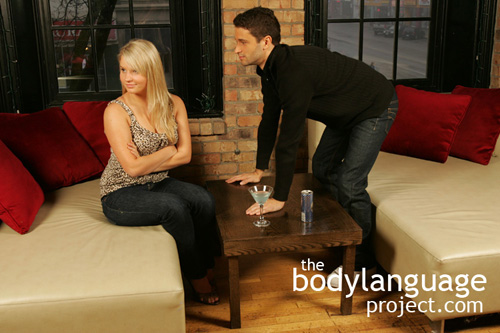
The invisible lint picker doesn’t like what’s being said and is trying to get out of the conversation.
Leaning forward and lowering the head shows a critical listener and indicates that what was being said is disliked. However, there is another related posture that shows an even greater form of contempt and disapproval. It happens also by dropping the head, however, while in the position, the person will begin to pluck invisible lint from their clothing. In doing so, eye contact is broken to stammer the flow of conversation. The gesture says that there are unspoken objections that are withheld either because they feel that they won’t be well received, because they are too timid to speak up, or is a passive attack on a figure of authority.
Any other rude gesture meant to occupy the mind in lieu of paying attention says that a person lacks respect, integrity or feels that they undeservedly lack control in the relationship and set out to prove it. A person can pick their nails or remove dirt from underneath them, drum their fingers, smooth their clothing when it does not require it, or seem distracted due to any number of factors. The goal of the invisible lint picker is to withhold eye contact to gain an upper hand and end the conversation on their terms, without being forthright about it. A person with integrity will use honest body language such as pointing their feet and torsos toward the doorway, reduce agreement indicators, and use conversation ending speech to speed things up. The lint picker, on the other hand, uses passive aggressive techniques to waste the speaker’s time with no regard for their own. At times the lint picker is trapped by a more authoritative figure than them, such as a boss, which prohibits them from leaving. Their defense to this is to figuratively “kick dirt in their eyes” by withdrawing from the conversation. When small children block their ears, close their eyes and sing to themselves loudly in order to tune out adults, they are accomplishing exactly what lint peckers have set out to do. Incidentally, small children also use distraction techniques to avoid the reprimands of adults. Whenever these cues persist they should be quickly rectified so as to maintain respect.



